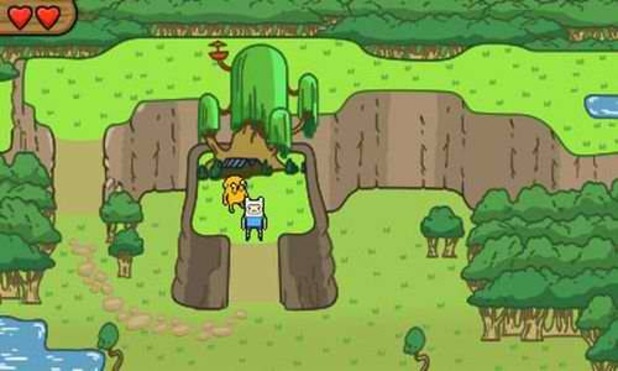THE GAMEPLAY: People have been saying it's a lot like Zelda II. The enemy encounters and walking everywhere on the minimap are like Zelda II, but the difficulty is not. It was easy enough for me to beat, and I suck at Zelda games. For those who like more challenge, supposedly the New Game+ is a little more difficult. You hit enemies with one of several moves to do damage; if you can't avoid them you take a hit.
Food lying around gets you health back, as do the numerous save points. You can combine condiments with food to make it better, but only if you find the right combination (I put wildberry jam on a royal tart and it actually hurt me when I ate it). Oh, and I think apple pies are probably the best healing thing in the game.
There were lots and lots of items to give you temporary powers. I tended to save them up instead of using them... the only ones I was glad I saved was a bomb for a boss, and some wings to get to a certain area sooner. The others I think I should have used as soon as I got them so I could have had more room in my inventory for food.
I loved the save points in this game. They were always there when I needed one, and since they give you full health, they cut down on the need to constantly chomp down on hamburgers.
 |
| img src |
A few times I was feeling stuck and almost stopped playing, but I thought "I'll just go back here or explore this next area" and that always worked. Like I said, the game wasn't very long, but I'm actually glad it didn't get much harder. It might have been cool to have one more area in outer space or something, but the arc of the game felt good, and I wasn't sick of playing when it ended.
THE MUSIC: I loved it. I think my favorite was the little remix of the theme song for the victory music. I didn't care for the song playing on the title (the theme only covered by a different band), but the rest matched my expectations for zelda and megaman-themed music. The final boss theme song was also hilarious and awesome.
THE GRAPHICS: Cute and perfect.
THE COLLECTOR'S EDITION: The map was the map from the game and... not all that cute, although I guess they were going for a retro feel, which I understand. The little monster guide booklet had some cute copy in it. The sword stylus is cool, but this game doesn't use the stylus that much, so I might have to use it for some other game. The Enchiridion case is awesome, and since I'm a big fan it was worth the extra $10 to get some goodies. Otherwise it's probably not worth it (like most collector's editions).
PERFECT FOR: Children with a 3DS who are old enough to read and understand information (it's all text), and fans of Adventure Time.
